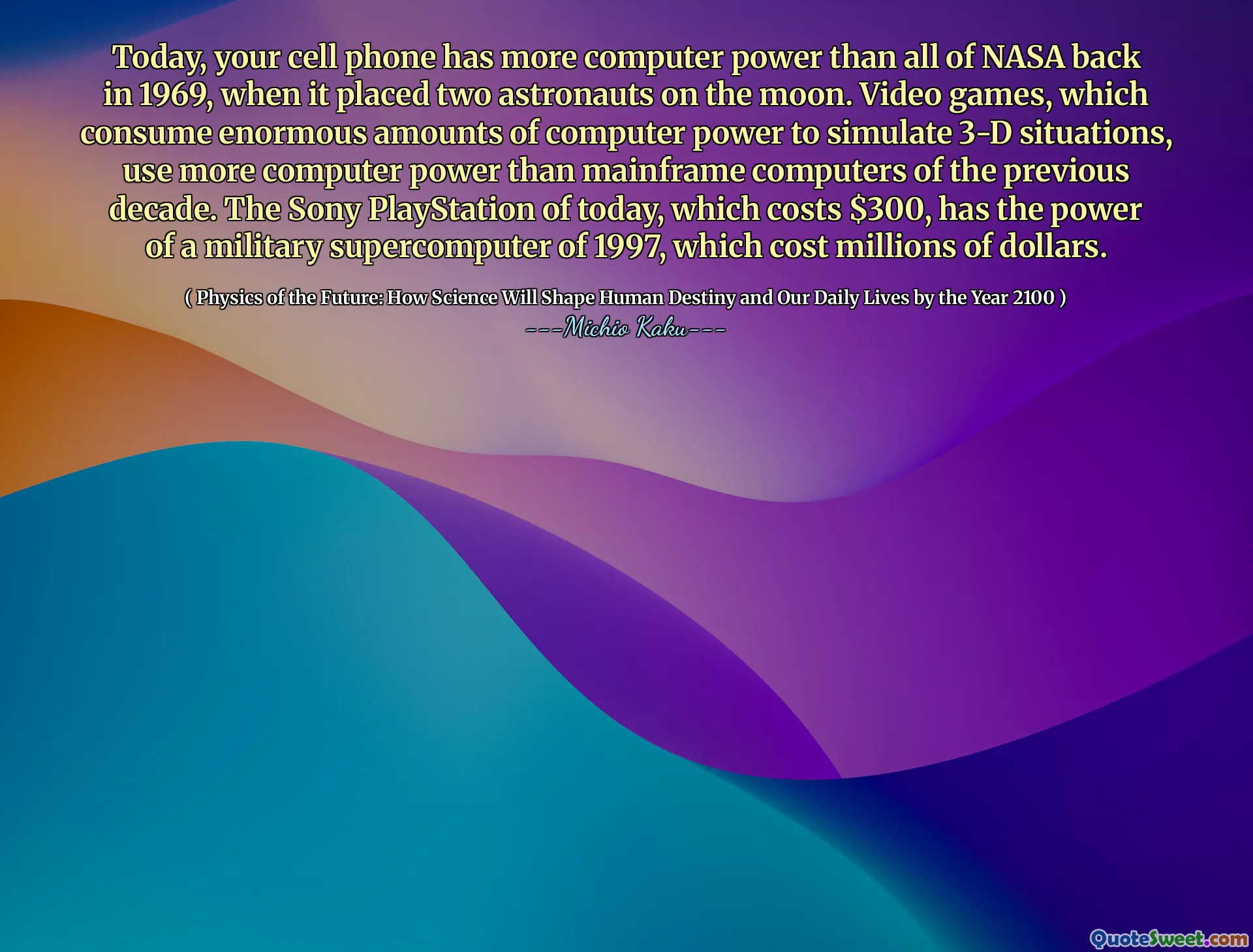
Today, your cell phone has more computer power than all of NASA back in 1969, when it placed two astronauts on the moon. Video games, which consume enormous amounts of computer power to simulate 3-D situations, use more computer power than mainframe computers of the previous decade. The Sony PlayStation of today, which costs $300, has the power of a military supercomputer of 1997, which cost millions of dollars.
This quote underscores the breathtaking pace of technological progress in the field of computing power over just a few decades. It highlights how devices that are now commonplace, such as cell phones and gaming consoles, outstrip the computational capabilities of machines that once achieved monumental feats, such as the Apollo moon landing or military supercomputers. This comparison not only evokes a sense of awe at human ingenuity but also challenges our perception of technology and what it means for the future. The juxtaposition of the enormous computing power once reserved for government agencies or militaries now existing in affordable consumer products demonstrates the miniaturization, increased efficiency, and cost reduction that have characterized semiconductor technology and computer architecture advances. It suggests that the tools for extraordinary accomplishments are becoming more accessible than ever, democratizing innovation and the ability to explore complex virtual environments. The mention of video games consuming more power than previous mainframes points to how entertainment technologies drive advancements and push the envelope in graphics and simulation, often ahead of scientific or industrial applications. Overall, this observation from Michio Kaku's "Physics of the Future" invites reflection on how future developments might unfold given current trends, such as the potential for even more powerful, compact, and affordable computing devices that could reshape society, communication, entertainment, and exploration in unforeseen ways. It also suggests that with this increased power, responsibility and ethical considerations must evolve alongside technological capability.






